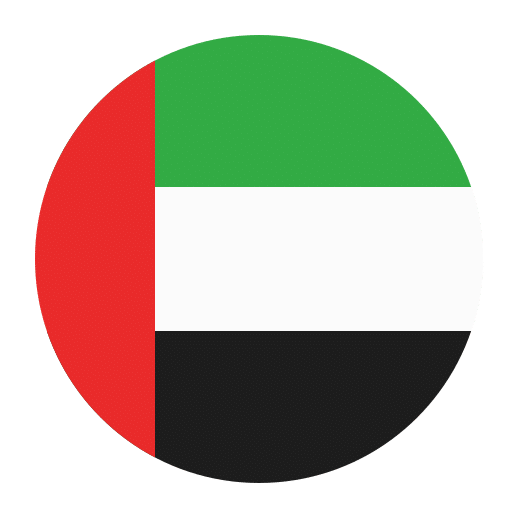Arabic Words for Colors and Shapes
When learning a new language, one of the foundational elements is understanding the vocabulary for colors and shapes. These basic terms are not only essential for everyday conversation but also for describing the world around us. In Arabic, just like in English, colors and shapes are integral parts of communication. This article will guide you through the essential vocabulary for colors and shapes in Arabic, providing you with a strong foundation to describe the vibrant and varied world we live in.
Colors in Arabic
Colors are some of the first words that language learners usually tackle. Here are some of the most common colors in Arabic:
Primary Colors
1. **Red** – أحمر (Ahmar)
2. **Blue** – أزرق (Azraq)
3. **Yellow** – أصفر (Asfar)
Secondary Colors
1. **Green** – أخضر (Akhdar)
2. **Purple** – أرجواني (Urjuwani)
3. **Orange** – برتقالي (Bortuqali)
Other Common Colors
1. **Black** – أسود (Aswad)
2. **White** – أبيض (Abyad)
3. **Brown** – بني (Bunni)
4. **Pink** – وردي (Wardi)
5. **Grey** – رمادي (Ramadi)
6. **Gold** – ذهبي (Dhahabi)
7. **Silver** – فضي (Fiddi)
It’s important to note that in Arabic, colors can take on different forms depending on the gender and plurality of the noun they are describing. For instance, the word for red changes to حمراء (Hamra) when describing a feminine noun.
Shapes in Arabic
Just as colors are fundamental to language, so too are shapes. Understanding these terms will allow you to describe objects more precisely. Here are some essential shapes in Arabic:
Basic Shapes
1. **Circle** – دائرة (Daira)
2. **Square** – مربع (Murabba)
3. **Triangle** – مثلث (Muthallath)
4. **Rectangle** – مستطيل (Mustatil)
5. **Oval** – بيضاوي (Baydawi)
Complex Shapes
1. **Pentagon** – خماسي الأضلاع (Khumasi Al-Adlaa)
2. **Hexagon** – سداسي الأضلاع (Sudasi Al-Adlaa)
3. **Heptagon** – سباعي الأضلاع (Subai Al-Adlaa)
4. **Octagon** – ثماني الأضلاع (Thumani Al-Adlaa)
5. **Star** – نجمة (Najma)
6. **Heart** – قلب (Qalb)
Usage in Sentences
Understanding the words is one thing, but being able to use them in sentences is where the real learning happens. Here are some examples of how you might incorporate these color and shape words into everyday conversation:
1. The sky is blue. – السماء زرقاء (Al-sama’a zarqa’)
2. I have a red car. – لدي سيارة حمراء (Laday sayara hamra’)
3. The book is green. – الكتاب أخضر (Al-kitab akhdar)
4. She drew a circle. – هي رسمت دائرة (Hiya rasmata daira)
5. The table is square. – الطاولة مربعة (Al-tawila murabba’a)
Adjectival Agreement
In Arabic, adjectives must agree in gender, number, and case with the nouns they describe. For instance:
1. Masculine Singular: The red apple – التفاحة الحمراء (Al-tuffaha al-hamra’)
2. Feminine Singular: The red book – الكتاب الأحمر (Al-kitab al-ahmar)
3. Masculine Plural: The red apples – التفاحات الحمراء (Al-tuffahat al-hamra’)
4. Feminine Plural: The red books – الكتب الحمراء (Al-kutub al-hamra’)
Practice Makes Perfect
To truly master these words, regular practice is essential. Here are some tips to help you incorporate color and shape vocabulary into your daily routine:
1. **Label Items Around You**: Place labels on items around your house with their Arabic names and colors. This constant visual reminder will help reinforce your learning.
2. **Flashcards**: Create flashcards with the Arabic word on one side and the English word on the other. Test yourself regularly.
3. **Use in Conversation**: Try to incorporate these words into your conversations, even if you’re just talking to yourself. The more you use them, the more natural they will become.
4. **Children’s Books**: Reading children’s books in Arabic can be a great way to see these words in context. The simple language and pictures can help solidify your understanding.
5. **Language Exchange**: Practice with a language partner. Describe objects to each other using colors and shapes.
Additional Vocabulary
Here are some additional words that might come in handy when discussing colors and shapes:
1. **Light (Color)** – فاتح (Fateh)
2. **Dark (Color)** – غامق (Ghamiq)
3. **Bright** – ساطع (Satie)
4. **Pale** – شاحب (Shaheb)
5. **Pattern** – نمط (Namot)
6. **Striped** – مخطط (Mukhattat)
7. **Dotted** – منقط (Munaqqat)
8. **Solid** – صلب (Salb)
By incorporating these additional descriptors, you can make your descriptions even more vivid and precise.
Cultural Significance
Colors and shapes can have cultural significance and symbolism in many societies, including those where Arabic is spoken. For example:
1. **Green** – Often associated with Islam and considered a sacred color.
2. **Red** – Can signify danger, but also passion and love.
3. **White** – Symbolizes purity and peace.
4. **Black** – Might represent mourning but can also signify power and elegance.
Understanding these cultural nuances can provide deeper insights into the language and the people who speak it.
Conclusion
Learning the Arabic words for colors and shapes is a crucial step in your language learning journey. Not only do these words allow you to describe the world more vividly, but they also help you understand and appreciate the rich cultural context in which the Arabic language is used. By regularly practicing and incorporating these words into your daily routine, you’ll find that your ability to communicate in Arabic will grow stronger and more nuanced.
Remember, language learning is a marathon, not a sprint. Take your time, practice consistently, and enjoy the process of discovering a new way to see and describe the world. Happy learning!

